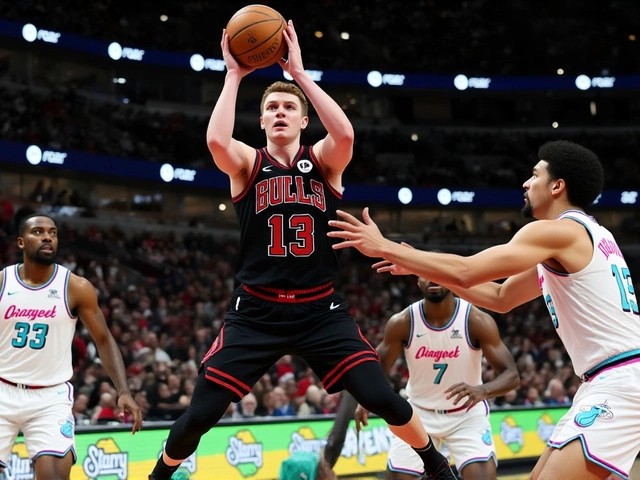In a move that could rewrite the rules of online subscriptions, the Federal Trade Commission announced a settlement worth $2.5 billion with Amazon.com, Inc. on September 15, 2025. The deal, unveiled from the agency’s headquarters in Washington, D.C., targets alleged “dark‑pattern” tactics that auto‑enrolled millions of U.S. shoppers in Prime without clear consent and made canceling the service a labyrinthine ordeal.
Background of the Prime Subscription Dispute
Consumer complaints about unwanted Prime memberships began flooding the FTC’s complaint portal in early 2019. Between June 23, 2019 and June 23, 2025, the agency logged more than 1.3 million formal complaints, many of which described prepaid checkboxes, hidden terms, and a cancellation process that required navigating more than a dozen screens. Internal Amazon memos, obtained during discovery, referred to the practice as “a bit of a shady world” and warned that the tactics were “an unspoken cancer” harming the brand’s reputation.
The FTC’s investigation was led by Andrew N. Ferguson, the commission chair appointed under the Trump‑Vance administration. Ferguson’s office argued the conduct violated Section 5 of the FTC Act (15 U.S.C. § 45) and the Restore Online Shoppers’ Confidence Act (ROSCA) of 2010, which explicitly bans negative‑option billing unless the consumer provides an affirmative “opt‑in.”
Details of the $2.5 Billion Settlement
Under the settlement, Amazon will pay a $1 billion civil penalty to the U.S. Treasury and set aside $1.5 billion to automatically refund eligible Prime members. The refund pool caps at $51 per consumer and will be deposited to the original payment method by December 25, 2025 – no action required from shoppers.
- Eligibility: U.S.–based Prime members who enrolled between June 23, 2019 and June 23, 2025, and used fewer than three Prime benefits in any consecutive 12‑month period.
- Refund cap: $51 per eligible account, funded from the $1.5 billion pool.
- Payment deadline: Refunds processed by December 25, 2025; civil penalty due within 14 days of court approval (expected by November 30, 2025).
- Compliance: Amazon must redesign its enrollment flow, eliminate pre‑checked boxes, and provide a single‑click cancellation option available at all times.
- Monitoring: First compliance report due March 31, 2026, overseen by Samuel Levine, director of the FTC’s Bureau of Consumer Protection.
The agreement also obligates Amazon to submit annual certifications for the next 20 years, confirming that its UI complies with the FTC’s clear‑disclosure standards. Failure to meet these benchmarks could trigger additional penalties, a point emphasized by FTC officials during the press conference.
Reactions from Stakeholders
“Today the Trump‑Vance FTC made history and secured a record‑breaking, monumental win for the millions of Americans who are tired of deceptive subscriptions that feel impossible to cancel,” said Chairman Ferguson. He added that the settlement sends a “clear signal” to all digital platforms that dark‑pattern designs will no longer be tolerated.
Neil Lindsay, Amazon’s senior vice president of Prime, issued a brief statement saying the company “recognizes the concerns raised by the FTC and is committed to improving the customer experience.” Vice president Jamil Ghani echoed the sentiment, promising “transparent enrollment and hassle‑free cancellation going forward.”
Consumer‑rights attorneys hailed the outcome. Sarah L. Raacke of Alston & Bird noted, “The settlement signals continued FTC scrutiny of subscription practices and negative‑option features across all digital platforms.” Meanwhile, the Financial Fraud Enforcement Strike Force estimated the $1.5 billion refund allocation represents roughly 60 % of the total settlement value directed to consumers.
Implications for E‑commerce and Consumer Protection
The case builds on a series of FTC actions targeting dark‑pattern UI designs, including recent rulings against a major video‑streaming service and a popular fitness‑app. Legal scholars suggest the Amazon settlement could become a benchmark for future “opt‑in” enforcement, especially as more services migrate to subscription‑based revenue models.
For merchants, the practical takeaway is straightforward: any interface that nudges a user into a paid commitment without an explicit, affirmative action is now high‑risk. Companies are expected to adopt “clear, conspicuous, and unambiguous” disclosures, a phrase woven into the settlement’s conduct requirements.
From a consumer perspective, the automatic refunds eliminate the need for claim forms, a feature designed to counteract the very friction Amazon allegedly built into its cancellation flow. The FTC also warned scammers might try to exploit the news, urging shoppers to ignore any unsolicited calls or emails asking for personal information.
Next Steps and Compliance Monitoring
Amazon’s first compliance report, due by March 31, 2026, will detail the redesign of the Prime sign‑up page, the removal of pre‑checked boxes, and metrics on cancellation success rates. The FTC’s Bureau of Consumer Protection, staffed by over 1,100 professionals across Washington, New York, San Francisco, Chicago, and Los Angeles, will conduct periodic audits and may impose further sanctions if discrepancies arise.
Industry observers will be watching closely as the settlement proceeds to court approval. If the judge signs off before the end of November, the $1 billion penalty will be transferred to the Treasury, and the $1.5 billion consumer pool will be funded. Until then, Amazon is already rolling out changes on its website and mobile apps, testing new “Cancel Prime” buttons that appear on the account dashboard with a single click.
Frequently Asked Questions
Who is eligible for the automatic Prime refunds?
U.S. residents who were enrolled in Amazon Prime between June 23, 2019 and June 23, 2025, who either attempted but failed to cancel during that period or used fewer than three Prime benefits in any consecutive 12‑month span, qualify. Each eligible account will receive up to $51, deposited automatically by December 25, 2025.
What specific practices did the FTC deem illegal?
The FTC cited the use of pre‑selected checkboxes, hidden terms, and a multi‑step cancellation process that forced users through more than a dozen screens. These “dark‑pattern” tactics violated Section 5 of the FTC Act and ROSCA’s ban on negative‑option billing without a clear, affirmative consumer action.
How will Amazon ensure future compliance?
Amazon must eliminate all pre‑checked enrollment boxes, provide a single‑click cancellation button visible at any time, and submit annual compliance certifications for the next two decades. The FTC will review the first report by March 31, 2026, and conduct spot audits thereafter.
What should consumers watch out for after the settlement?
Scammers may pose as FTC or Amazon representatives asking for payment or personal data to “process” the refund. The FTC warns that neither agency will contact consumers directly about the refunds, and any such request should be reported at ReportFraud.ftc.gov.
Will this settlement affect other subscription services?
Legal analysts expect the FTC will use this case as a template for future actions against companies employing similar dark‑pattern designs. The agency is already investigating at least 12 other firms for ROSCA violations, so the ripple effect could reshape the entire subscription economy.





